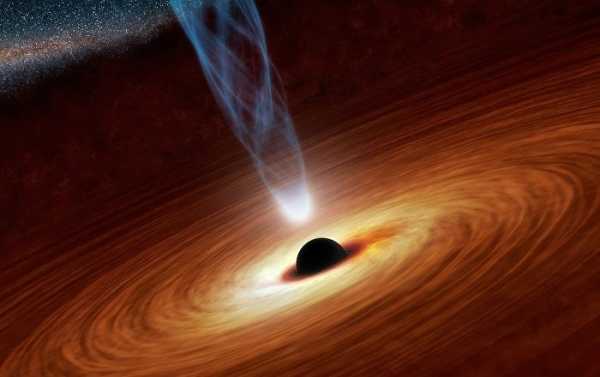
Dubbed by NASA as one of the most elusive cosmic objects in the universe, the intriguing “intermediate-mass black holes” are a great deal more hard to find than supermassive black holes that lie at the heart of galaxies
Astronomers believe they may have discovered an elusive cosmic body called the “missing link” black hole while unraveling a mystery dating back decades, according to research published in The Astrophysical Journal Letters.
According to the NASA space agency, the object – also known as an “intermediate-mass hole” – was identified by the Hubble Space Telescope.
The study, which reads rather like a Sherlock Holmes story, according to NASA, dates back to 2006 when two satellites, NASA’s Chandra X-ray Observatory and ESA’s (the European Space Agency) X-ray Multi-Mirror Mission (XMM-Newton), came across strong X-ray flares that didn’t seem to have an obvious source.
While matching the flashes that would be emitted when a star was being swallowed up by a black hole, the location of the X-ray was far outside of the galaxy’s centre, where massive black holes are normally situated.
At this point Hubble telescope was called in to solve the mystery.

The Hubble Space Telescope as seen from the US space shuttle Columbia (file)
High-resolution imaging from the telescope suggested that the flares were likely coming from a cluster of stars on the outskirts of another galaxy, ruling out that the reason was a neutron star. The latter is a remnant of an exploded star in our Milky Way which isn’t massive enough to collapse into a black hole.
This fired the hopes of the team, as a cluster of stars on the outskirts of the distant galaxy was where they would anticipate locating an intermediate-mass black hole (IMBH).
Universe’s Most Elusive Object
The “intermediate-mass holes” are black holes which are much smaller than the supermassive ones situated at the heart of galaxies, but still larger than stellar black holes – the result of a star collapsing upon itself.
The IMBHs do not have readily available sources of fuel, nor do they boast the gravitational pull of supermassive black holes. The latter always have the fuel to draw in stars and other cosmic material, which is why their so-called X-ray glow is mostly constant.
However, the smaller black holes are known for not often emitting this glow – thus rendering them so elusive.
As they analyzed the x-ray glow from the swallowed up star, the mass of the IMBH was estimated based on both X-ray luminosity and the spectral shape.
While the data confirmed the object as an IMBH, the mystery is still an open one, as further studies will be required to find out how the “intermediate-mass holes” form, if they ever grow to become supermassive black holes, and do they always occur within dense star clusters.
Sourse: sputniknews.com






